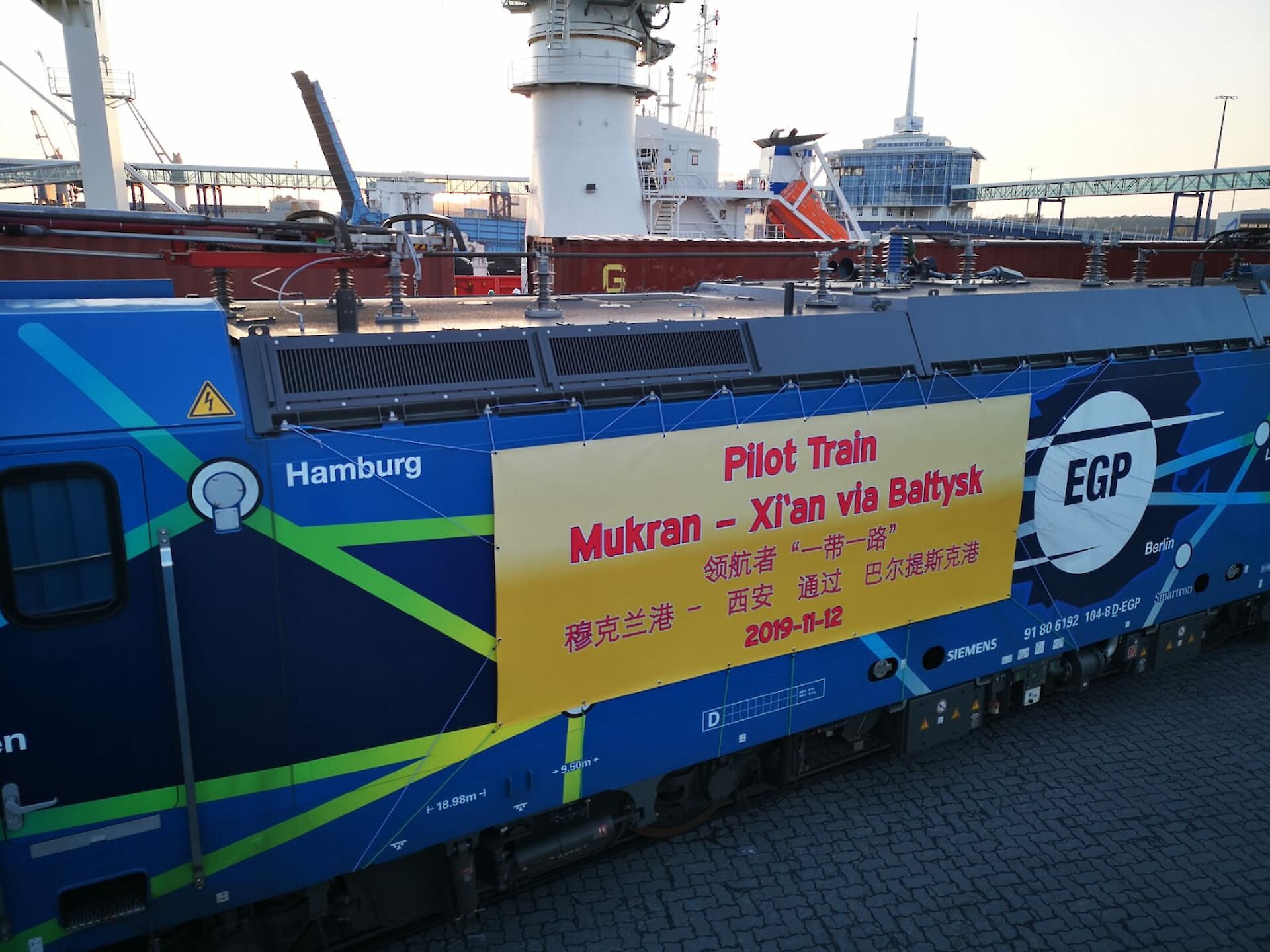

15 Nov 2019 00:00 Economy
UTLC ERA sends first train from China to Germany via rail and ferry
On Tuesday 12th November, the first goods train from China will arrive on the island
of Rügen. The destination at this stage of the journey is the Baltic Sea port of Mukran.
From there, the container wagons containing both consumer goods and industrial
goods will continue by rail to Hamburg. What is special about this journey is that the
train, which started out from Xi’an in Central China at the beginning of November, is
the first ever of its kind to have been en route with a single CIM/SMGS waybill – even
though this was a multimodal journey. The journey proceeded by rail to Baltysk in the
Kaliningrad region of Russia; thereafter the wagons were transported across the Baltic
Sea by ferry to the port of Mukran on Rügen.
This stage of the journey across the Baltic Sea means that the Chinese initiative of the
New Silk Road now has a new corridor from Kaliningrad (formerly Königsberg) direct
to Germany, in addition to the existing one via Belarus/Poland
(Brest/Malaschewitschi). The new rail link to Baltysk is being used by the multinational
railway company UTLC ERA, which is responsible for the entire door-to-door transport
service on the 1520 mm broad-gauge tracks.
In using a single CIM/SMGS waybill in multimodal, transcontinental transport by rail
and sea for the first time, UTLC ERA has found a new way to reduce transit times and
increase transport volumes on the New Silk Road. Moreover, this new CIM/SMGS
waybill is being used for the first time not only for two internationally different legal
systems but also for two different modes of transport.
The new, multimodal transport route aims to support the strategy of ULTC ERA to build
long-term relations with European transport and logistics companies and to further
develop rail logistics along the Eurasian corridor.
The port of Kaliningrad is linked with the entire Baltic Sea area via short ferry routes.
For this reason, the multimodal corridor of Kaliningrad-Mukran can successfully
complement the traditional routes across the land borders of Belarus and Poland. As
Alexey Grom, CEO of UTLC ERA, explains, “The first deliveries of goods via this short
sea route already show that there is huge potential. However, the success of this new
route depends on the degree of integration and interaction between all transport
partners. So, we look forward to the further development of our joint project and to
opening scheduled services very soon.”
New service on New Silk Road
UTLC ERA
phone: +7 (495) 995-95-91,
email: pr@utlc.com